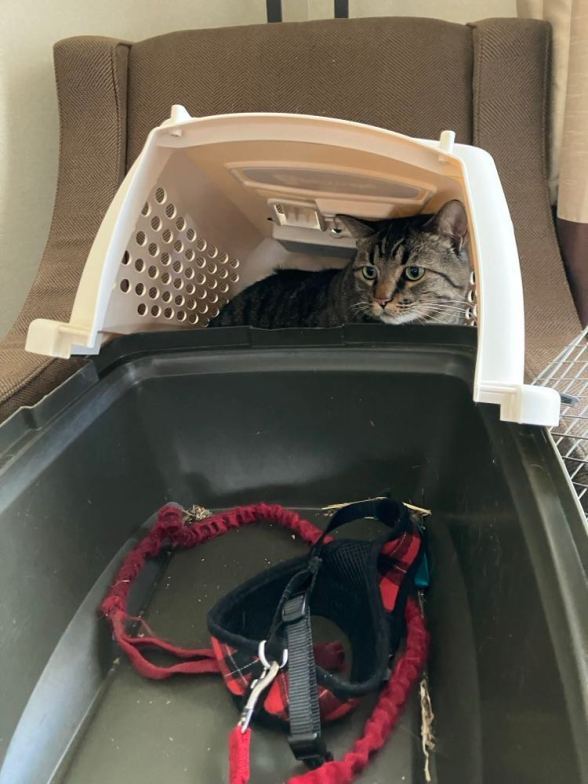Mother says we are at a Comfort Inn, but I don’t think so. I am NOT comfortable! Mother packed things for days and took them out to a car. Not the usual one! We don’t like it when she leaves, but this time she kept taking OUR things out. Our privy! Toys! The playtube! Our crate! We wondered if she was giving them to Other Cats, horrors. But then she put our harnesses on and put us in the carrier and in the new weird smelling car. The car went with us trapped inside! And it went and went and went.
We objected. Mother had a net between the front and back, but we both outwitted that easily. Sol Duc went under the seats. I sat on Mother’s lap. She stopped and explained that this was not safe. I knew that! Cars aren’t safe! She put us back in the carrier and moved things around and then we rode in our crate. We had food and water and our privy. We could see Mother and the horrible terrible trucks around us. We complained some but at least we were in the crate. We slept sometimes.
At last Mother stopped and put us in the carrier again. It smells very strange outside and we are NOT at home. She took us in to the Comfort Place. I refused to leave the carrier. She took the top off, but I can hide under the top.
We really do not know what will happen today. Mother can be very crafty. We outwit nets, but the car is more difficult. We do want to stay with Mother.
Last night we used the harnesses to make new art. We are crafty too.

For the Ragtag Daily Prompt: craft.












You must be logged in to post a comment.